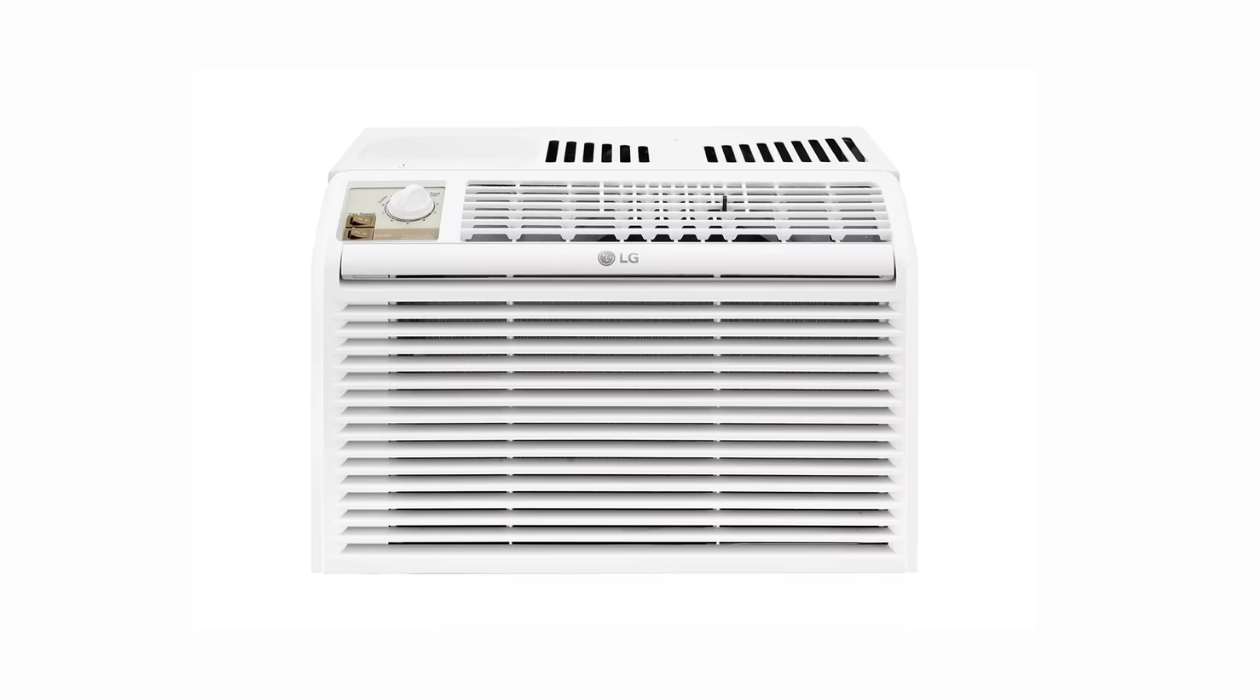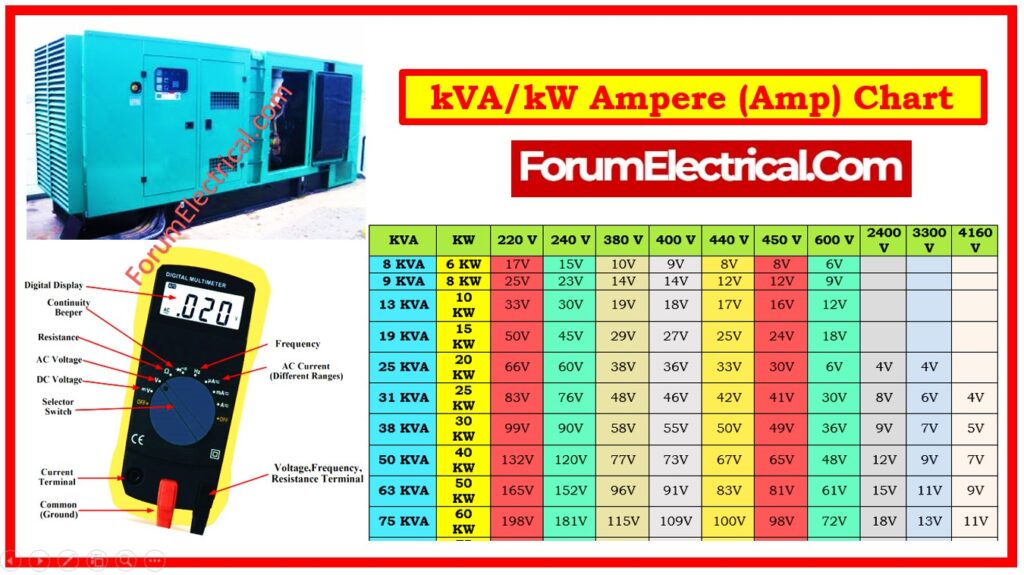Cool Info About How Many Amps Does An AC Unit Use

How Many Amps Does An Rv AC Use Storables
Understanding AC Unit Amperage
1. Why knowing your AC's amperage matters
Ever wondered how much electricity your air conditioner is actually pulling? It's not just about the monthly bill shock (we've all been there!). Knowing the amperage, or amps, your AC unit uses is crucial for several reasons. Think of it as understanding your AC's energy appetite. It helps you prevent tripped breakers, ensure your electrical system can handle the load, and even optimize your energy consumption for a cooler home and a lighter environmental footprint. It also helps determine if you can run other appliances without overloading the circuit. Basically, being in the know about your AC's amps puts you in control.
Amperage, for those who might be scratching their heads, is simply the measure of electrical current. It's like the flow rate of water in a pipe; the higher the amperage, the more electricity is flowing. Your AC unit, being a power-hungry appliance, requires a certain amount of amperage to function correctly. Not enough, and it won't cool properly. Too much, and you risk overloading your electrical circuits.
So, how do you figure out the magic number? Well, it's not as complicated as quantum physics, I promise. The amperage of your AC unit largely depends on its size (measured in BTUs British Thermal Units), its efficiency (SEER rating — Seasonal Energy Efficiency Ratio), and its voltage. A larger, older, less efficient AC will generally guzzle more amps than a smaller, newer, and more efficient one. Let's get into the specifics...
Think of it like choosing a car. A compact, fuel-efficient hatchback will use less gas than a big, gas-guzzling SUV. Similarly, a modern, high-SEER AC unit is designed to deliver the same cooling power with significantly less electrical input. It's all about the technology, baby!

Factors Influencing AC Amperage Draw
2. BTUs, SEER, and Voltage
Okay, let's break down the three main musketeers that determine how many amps your AC unit drinks up. First, we have BTUs. This measures the cooling capacity of your AC. A higher BTU rating means it can cool a larger area, but it also usually means it needs more power. Think of it as the "engine size" of your AC. The bigger the engine, the more fuel (or electricity) it consumes.
Next up, we have the SEER rating. This is where efficiency comes into play. A higher SEER rating indicates a more efficient unit. This means it can deliver the same cooling power as a lower-SEER unit, but using less electricity. Kind of like a hybrid car compared to a regular one — same destination, less fuel burned. Aim for a higher SEER rating if you're looking to save on energy bills and reduce your electrical load.
Finally, we have voltage. Most residential AC units operate on either 120 volts or 240 volts. Generally, higher voltage appliances draw fewer amps to deliver the same amount of power. It's like using a wider pipe to carry the same amount of water — the flow rate (amperage) will be lower. 240V systems are generally more efficient for larger AC units.
Consider this analogy: imagine two people carrying the same amount of bricks. One person is using a small bucket (120V), requiring them to make more trips (higher amperage). The other person is using a larger wheelbarrow (240V), allowing them to carry more bricks per trip (lower amperage). Same amount of bricks moved, but different effort required!

How Many Watts Does My Ac Unit Use To Purchase A Generator For An
Estimating AC Unit Amperage
3. Rough estimates and where to find the real numbers
Alright, let's get down to some ballpark figures. A small window AC unit (5,000-6,000 BTUs) might draw anywhere from 5 to 8 amps on a 120V circuit. A larger window unit (10,000-12,000 BTUs) could pull 8 to 12 amps. Central AC units are a whole different ballgame. A smaller central AC unit (1.5-ton, around 18,000 BTUs) might use 9 to 12 amps on a 240V circuit. A larger unit (3-ton, around 36,000 BTUs) could draw 15 to 20 amps, or even more! These are just general estimates though.
The most accurate way to find out the amperage your AC unit uses is to check the nameplate. This is usually a sticker located on the unit itself, often on the side or back. It will list the voltage, amperage (sometimes labeled as "MCA" for Minimum Circuit Ampacity or "RLA" for Rated Load Amps), and other important electrical information. This is the definitive source of truth! Don't rely solely on online estimates; always refer to the nameplate for the most accurate data.
Don't confuse "starting amps" with "running amps." Starting amps, also known as inrush current, is the surge of electricity your AC unit needs when it first starts up. This can be significantly higher than the running amps. It's like when a car accelerates from a standstill; it needs more power initially. The nameplate will often list both values. When calculating circuit load, it's crucial to consider the starting amps to avoid tripping breakers.
Imagine your electrical system as a highway. Running amps are like the normal traffic flow, while starting amps are like a sudden burst of cars merging onto the highway. If the highway isn't wide enough (your electrical circuit isn't rated high enough), you'll get a traffic jam (tripped breaker)! So, always factor in that initial surge when sizing your circuits.

KVA/kW Ampere (Amp) Chart
How to Find the Exact Amperage of Your AC Unit
4. Decoding the Nameplate
Locating and deciphering the nameplate on your AC unit is like finding the decoder ring for your home's energy consumption! The nameplate is usually a metallic or plastic sticker affixed to the unit. For window AC units, it's generally on the back or side. For central AC units, it's usually located on the outdoor condenser unit. Look for terms like "Amps," "RLA" (Rated Load Amps), or "MCA" (Minimum Circuit Ampacity)."
RLA is the typical amperage the unit will draw when running under normal conditions. MCA, on the other hand, specifies the minimum amperage the circuit breaker should be rated for. It usually includes a safety margin to accommodate the starting amps. Always use the MCA value when sizing your circuit breaker and wiring. It's better to be safe than sorry when it comes to electricity!
Sometimes, the nameplate might list a range of amperage values. This could be due to varying operating conditions, such as different fan speeds or cooling modes. In this case, use the highest value listed to ensure your electrical system can handle the maximum possible load. Remember, it's always better to overestimate slightly than to underestimate.
Once you've found the amperage value, double-check it against your circuit breaker rating. If the AC's amperage is close to or exceeds the breaker's rating, you might need to upgrade the breaker and wiring to avoid tripping issues. It's best to consult with a qualified electrician for this type of work. Messing with electrical systems can be dangerous if you don't know what you're doing.

How Many Amps Does An Ac Unit Pull At Geraldine Williamson Blog
Troubleshooting AC Amperage Issues
5. When your AC is drawing too many (or too few) amps
If your AC unit is drawing more amps than it should, it could indicate a problem. Some common causes of high amperage draw include a dirty air filter, a malfunctioning compressor, or a refrigerant leak. A dirty air filter restricts airflow, forcing the AC unit to work harder and draw more power. Regularly cleaning or replacing your air filter is a simple way to keep your AC running efficiently.
A failing compressor can also cause excessive amperage draw. The compressor is the heart of the AC unit, and if it's struggling to pump refrigerant, it will consume more electricity. Similarly, a refrigerant leak can cause the compressor to overwork, leading to higher amperage draw. If you suspect a compressor issue or refrigerant leak, it's best to call a qualified HVAC technician for diagnosis and repair.
On the other hand, if your AC unit is drawing significantly less amps than it should, it could also indicate a problem. This could be due to a faulty capacitor, a loose connection, or a problem with the motor. A capacitor helps start the motor and keep it running smoothly. If the capacitor is weak or failing, the motor might not operate at full power, resulting in lower amperage draw.
Before calling a technician, check for any obvious issues, such as loose wiring or tripped breakers. However, for complex electrical problems, it's always best to err on the side of caution and seek professional help. Electrical problems can be dangerous and should only be handled by qualified individuals. Remember, safety first!

FAQs About AC Unit Amperage
6. Your burning questions, answered.
Q: How do I find out the amperage of my central AC unit?A: Look for the nameplate, usually located on the outdoor condenser unit. It will list the voltage, RLA (Rated Load Amps), and MCA (Minimum Circuit Ampacity). Use the MCA value for sizing your circuit breaker.
Q: Can I use an extension cord with my window AC unit?A: It's generally not recommended to use an extension cord with a window AC unit, especially not a thin, lightweight one. AC units draw a lot of power, and a flimsy extension cord can overheat and pose a fire hazard. If you absolutely must use an extension cord, make sure it's a heavy-duty cord rated for the amperage of the AC unit.
Q: What happens if my AC unit draws more amps than my circuit breaker is rated for?A: The circuit breaker will trip, cutting off power to the AC unit. This is a safety mechanism to prevent overloading the circuit and potentially causing a fire. If your breaker trips frequently, it's a sign that your AC unit is drawing too much power or that the breaker is undersized. Consult with an electrician to assess the situation and potentially upgrade the breaker and wiring.
Q: Does the thermostat setting affect the amperage draw of my AC unit?A: Yes, to some extent. When you set the thermostat to a lower temperature, the AC unit will run longer and harder to reach that temperature, resulting in higher overall energy consumption and potentially a slightly higher amperage draw over time. However, the most significant factor affecting amperage is the size and efficiency of the unit itself.